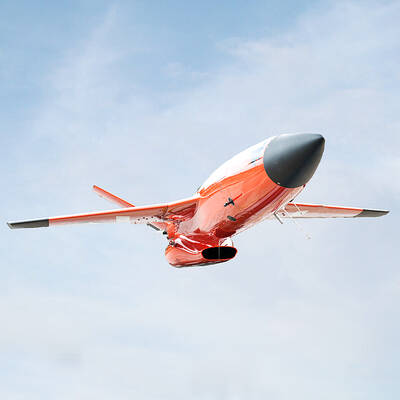Australia yesterday rejected a proposal by a Washington-based think tank to base a nuclear aircraft carrier strike group on Australia’s west coast as part of a shift of US military might to the Asia-Pacific region.
A Pentagon-commissioned report by the Center for Strategic and International Studies on repositioning US forces in the region suggested relocating an aircraft carrier from the US east coast to an Australian naval base south of the city of Perth.
However, Australian Defense Minister Stephen Smith said yesterday that while negotiations were under way to increase US navy access to Australia’s Indian Ocean base, HMAS Stirling, it would never become a US military base.
“We have made it crystal clear from the first moment — we don’t have United States military bases in Australia. We don’t see the need for that,” Smith told Australian Broadcasting Corp.
Smith said the think tank’s proposal was not endorsed by the US government.
The report said more than US$1 billion would need to be spent to make HMAS Stirling capable of becoming a home port to a nuclear carrier that would become the flagship of a carrier strike group.
Such a group would typically include two guided missile cruisers, two or three guided missile destroyers, two nuclear-powered submarines, a supply ship and up to nine squadrons of aircraft.
The Australian base would give the US a second carrier strike group in the Asia-Pacific region, the first with an existing Japanese home port in Yokosuka.
Washington has been forging closer military ties with countries in the region and has announced that 60 percent of the US Navy’s fleet will be based in the Asia-Pacific by 2020, up from less than 55 percent now.
Australia is a staunch US ally and the only country to fight alongside the US in every major conflict since the start of the 20th century.
China — Australia’s most important trade partner — has blasted the closer bilateral military ties as a return to Cold War divisions that risked the peace and security of the region.
Australian National University’s Strategic and Defense Studies Center head Hugh White said that US combat troops had not been based in Australia since World War II and that the situation was unlikely to change.
He said Chinese objections were the major reason why Australia was unlikely to ever allow US bases on its soil.
“The [Australian] government was surprised that China reacted as negatively as it has to the decision to have [US] Marines rotate deployments through Darwin, and I think they’ll be very careful not to risk further displeasure from China by doing anything that suggests they’re supporting a US military buildup in Asia,” White said.
“There’s a concern that the more the US builds up its military posture in the Western Pacific as part of [US] President Barack Obama’s pivot to Asia, the higher the risk that the US-China relationship will become more competitive, more adversarial, more hostile, and that pushes Australia close to the point of having to make a choice between the US and China, and that’s something we badly want to avoid,” he said.

‘WIN-WIN’: The Philippines, and central and eastern European countries are important potential drone cooperation partners, Minister of Foreign Affairs Lin Chia-lung said Minister of Foreign Affairs Lin Chia-lung (林佳龍) in an interview published yesterday confirmed that there are joint ventures between Taiwan and Poland in the drone industry. Lin made the remark in an exclusive interview with the Chinese-language Liberty Times (the Taipei Times’ sister paper). The government-backed Taiwan Excellence Drone International Business Opportunities Alliance and the Polish Chamber of Unmanned Systems on Wednesday last week signed a memorandum of understanding in Poland to develop a “non-China” supply chain for drones and work together on key technologies. Asked if Taiwan prioritized Poland among central and eastern European countries in drone collaboration, Lin

The US government has signed defense cooperation agreements with Japan and the Philippines to boost the deterrence capabilities of countries in the first island chain, a report by the National Security Bureau (NSB) showed. The main countries on the first island chain include the two nations and Taiwan. The bureau is to present the report at a meeting of the legislature’s Foreign Affairs and National Defense Committee tomorrow. The US military has deployed Typhon missile systems to Japan’s Yamaguchi Prefecture and Zambales province in the Philippines during their joint military exercises. It has also installed NMESIS anti-ship systems in Japan’s Okinawa

The Chien Feng IV (勁蜂, Mighty Hornet) loitering munition is on track to enter flight tests next month in connection with potential adoption by Taiwanese and US armed forces, a government source said yesterday. The kamikaze drone, which boasts a range of 1,000km, debuted at the Taipei Aerospace and Defense Technology Exhibition in September, the official said on condition of anonymity. The Chungshan Institute of Science and Technology and US-based Kratos Defense jointly developed the platform by leveraging the engine and airframe of the latter’s MQM-178 Firejet target drone, they said. The uncrewed aerial vehicle is designed to utilize an artificial intelligence computer

Renewed border fighting between Thailand and Cambodia showed no signs of abating yesterday, leaving hundreds of thousands of displaced people in both countries living in strained conditions as more flooded into temporary shelters. Reporters on the Thai side of the border heard sounds of outgoing, indirect fire yesterday. About 400,000 people have been evacuated from affected areas in Thailand and about 700 schools closed while fighting was ongoing in four border provinces, said Thai Rear Admiral Surasant Kongsiri, a spokesman for the military. Cambodia evacuated more than 127,000 villagers and closed hundreds of schools, the Thai Ministry of Defense said. Thailand’s military announced that